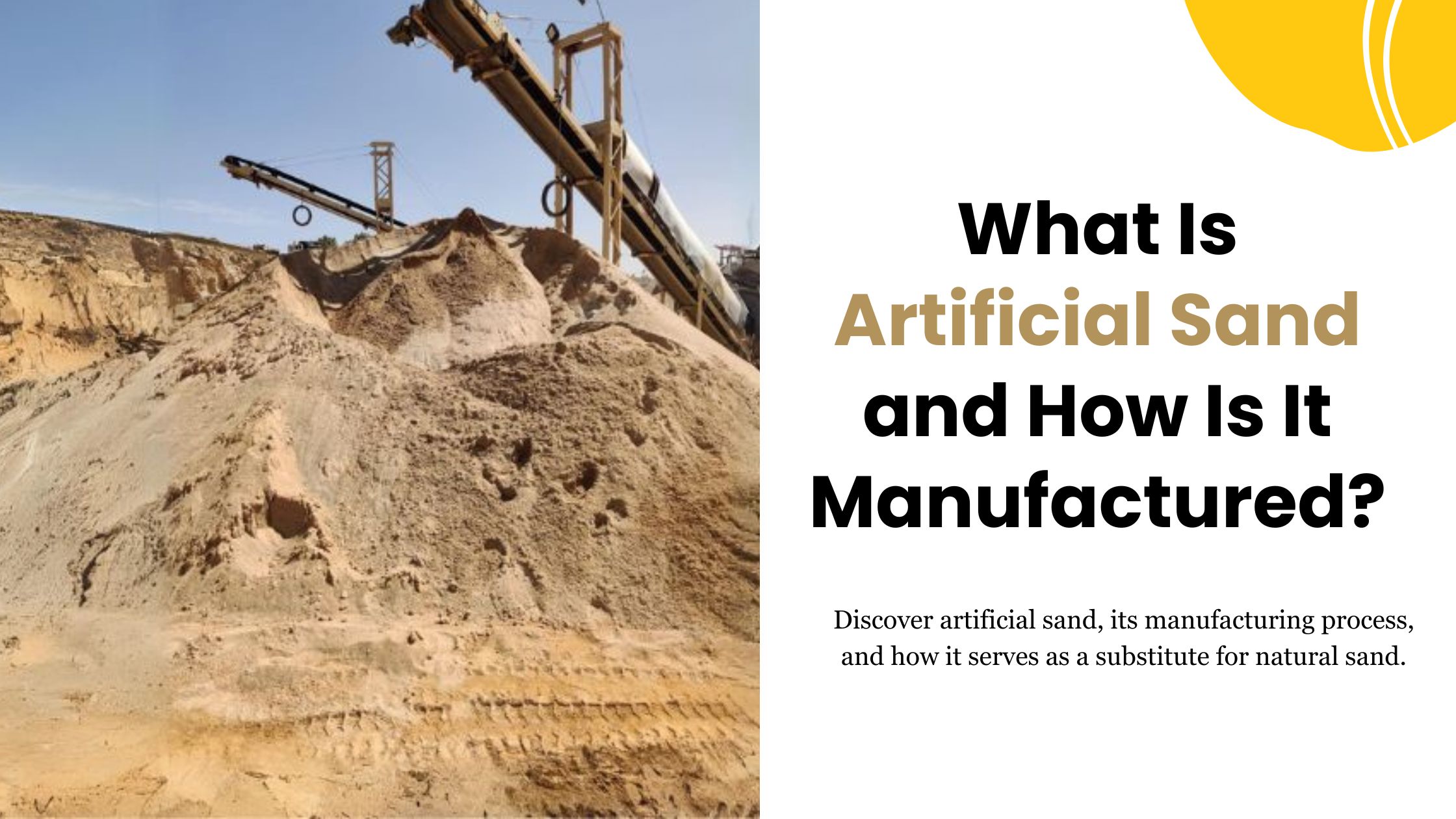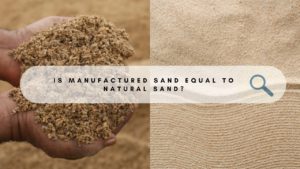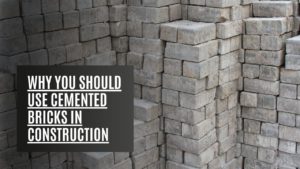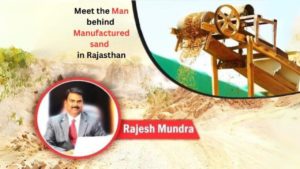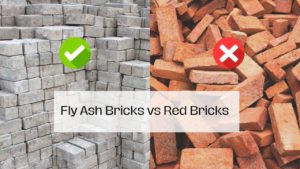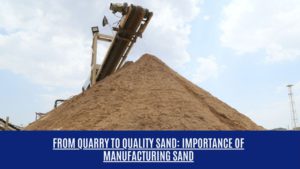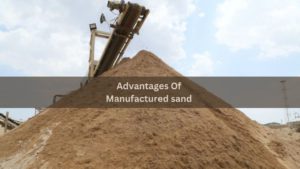Artificial Sand: What It Is and How It's Made
The construction company is the cornerstone of global development and highly relies on natural resources to increase growth. As natural resources become increasingly scarce and expensive it has evolved to cope with the demand of it. However, the construction sector has reevaluated its practices and developed innovative solutions. This is where artificial sand comes into the picture, providing sustainable construction practices. Artificial sand is a product that is manufactured by crushing hard granite, basalt, and other rock formations.
Join us as we explore the history of artificial sand a tale of sustainability, ingenuity, and the industry’s dedication to constructing a better future.
What Is Artificial Sand?
Artificial sand also popularly known as M sand is created by crushing hard granite, basalt and other suitable rock formations into smaller particles that look very similar to the natural sand. In contrast, natural sand is created over millions of years as wind and water erode the rock foundation. Artificial sand is produced in a regulated environment with the help of advanced machinery and techniques.
Difference between natural sand and artificial sand
| BASIS | Natural Sand | Artificial Sand |
|---|---|---|
| Source | Extracted from riverbeds, beaches, and dunes | Produced by crushing hard stones like granite, basalt, and limestone in a controlled environment. |
| Composition | Consists of rounded particles formed over thousands of years through weathering and erosion. | Composed of angular particles with rough surfaces |
| Texture | Typically has a smooth texture and consistent particle size | Rougher than natural sand, with more variation in particle shape and size |
| Availability | Limited and location-specific, often requiring transportation over long distances | Can be produced locally, making it more accessible in various regions |
Reasons for the scarcity and the expense of the natural resources
Sand mining is restricted by more environmental restrictions to safeguard river habitats, which lowers the supply.
Significant depletion has resulted from overexploitation of natural sand sources, particularly in regions with high demand.
The high cost of transporting sand from distant sources to construction sites adds to the overall expense.
Rapid urbanization and infrastructure development have significantly increased the demand for sand in construction.
Advantages of Using Artificial Sand
Cost-Effectiveness:
Local production of artificial sand is less expensive, avoiding significant transportation expenses and providing steady prices less impacted by market swings.
Consistency:
Artificial sand is produced under carefully monitored circumstances to guarantee consistent particle size and shape and dependable quality. Because it can be generated on demand, construction projects will always have access to a steady supply.
Eco-Friendliness:
Artificial sand minimizes industrial waste, encourages sustainable practices, and reduces dredging, which depletes natural resources. It also frequently uses recycled materials.
How Is Artificial Sand Manufactured?
Raw Material Selection
Types of raw material used
Granite: Known for its hardness and durability, granite is a common choice for artificial sand production.
Basalt: Another hard and dense rock, basalt is ideal for creating sand due to its strength.
River Pebbles: These are naturally weathered, smooth stones that can be crushed to produce fine sand.
Selection criteria for raw materials
- Durability and Hardness
- composition of minerals
- Lack of dangerous materials (such as clay or biological stuff)
- Local accessibility to cut down on transport expenses
Crushing Process
Primary crushing
Big rocks are fed into a primary crusher, such as an impact or jaw crusher.
Rocks are fragmented into smaller pieces, usually measuring between 100 and 150 mm.
This phase gets the material ready for further crushing.
Secondary crushing
The material from primary crushing is fed into secondary crushers (e.g., cone crushers or impact crushers)
Further size reduction occurs, bringing the particles down to 20-25mm
This stage aims to achieve the desired gradation for artificial sand production
Screening and Washing
Screening
Vibrating screens are used to sort the crushed material, separating the sand from the larger particles. This guarantees that only particles of the right size advance through the procedure.
Washing
To get rid of contaminants like dust, clay, and other impurities, the screened sand is cleaned. Sand that has undergone this washing procedure is of higher grade and is, therefore, more appropriate for use in construction.
Vertical Shaft Impact Crushers (VSI) Shaping and Grading
- Sand particles are shaped using VSI crushers, which produce well-formed, cubical particles perfect for building use.
- Rating: To guarantee uniform particle size distribution, which is essential for consistent performance in concrete and other building materials, the shaped sand is graded.
Testing for Quality Control:
To make sure it satisfies the required requirements and quality standards, the manufactured sand is checked for particle strength, size, and shape.
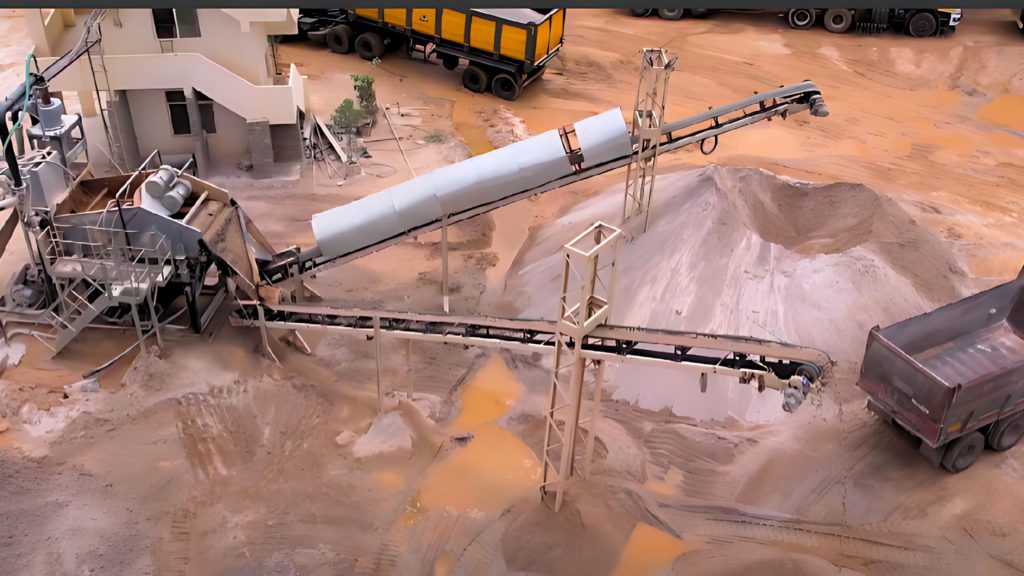
Ensuring the compliance
To ensure that artificial sand is suitable for use in building projects, it must adhere to industry standards, such as ASTM or IS norms. This guarantees the manufactured sand’s dependability in a range of construction applications while preserving the structural integrity and security of the buildings constructed with it.
Applications of Artificial Sand
Concrete Production: When it comes to high-performance and high-strength concrete applications, artificial sand is the recommended fine aggregate in mixes because it provides constant qualities that improve workability and strength.
Mortar and Plaster: Artificial sand offers better adherence and finish than some natural sands, making it perfect for mortar and plaster mixtures due to its consistent grading.
Road Construction: The angular particles of artificial sand, when mixed with asphalt mixtures, increase the interlocking and stability of road surfaces.
Landscaping: Artificial turf infill and ornamental landscaping components are installed on specific grades.
Precast Concrete Products: The uniform quality of precast concrete pieces is ensured by their consistent qualities.
Conclusion
Because of its consistency, affordability, and environmental friendliness, artificial sand is a desirable substitute for natural sand. Understanding the manufacturing process of artificial sand is crucial for construction professionals, engineers, and project managers. For those working in the building sector who need a trustworthy source of artificial sand of the highest calibre, Raj Mineral is a good choice to take into account. Raj Mineral is dedicated to producing artificial sand that satisfies industry requirements and advances construction projects.
ALSO READ: Manufactured Sand: Reshaping the Construction Industry
Follow us on @rajmineral

